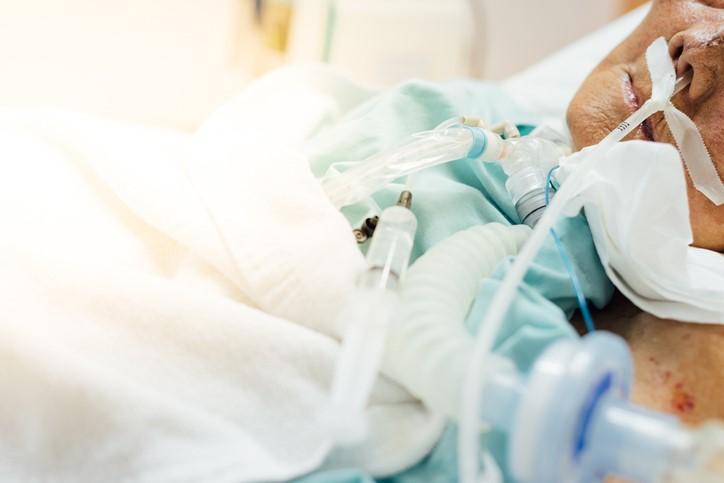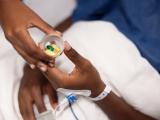A new report from the US Centers for Disease Control and Prevention (CDC) shows that antibiotic resistance is more prevalent in bacterial infections linked to medical devices such as catheters and ventilators than in the bacteria associated with surgical infections.
Data from more than 5,600 hospitals in the CDC's National Healthcare Safety Network (NHSN) also show that healthcare-associated infections (HAIs) acquired in long-term acute care facilities are more likely to be antibiotic resistant than those in short-stay acute care hospitals, while data from a separate report indicate that antibiotic resistance is more prevalent in adult HAIs than it is in pediatric hospital infections.
The lead author on the two reports, which appeared yesterday in Infection Control and Hospital Epidemiology, says the findings should be a wake-up call for hospitals and public health officials.
"These data show that the threat of exposure to bacteria that are resistant to antibiotics extends across the nation," CDC epidemiologist Lindsey Weiner-Lastinger, MPH, said in a press release from the Society for Healthcare Epidemiology of America (SHEA), the publisher of the journal. "The data also serve as an urgent call for healthcare facilities and public health agencies to intensify their efforts to prevent the emergence and spread of antimicrobial resistance."
Resistance higher in device-associated infections
The data cover central-line–associated bloodstream infections (CLABSIs), catheter-associated urinary tract infections (CAUTIs), ventilator-associated events (VAEs), and surgical-site infections (SSIs) reported to the NHSN by 5,626 acute care hospitals, long-term acute care hospitals, and inpatient rehabilitation facilities from 2015 through 2017. The report is the fourth summary of NHSN pathogen and antibiotic susceptibility data, and the CDC's most detailed HAI surveillance effort to date.
While hospitals are federally required to report these events to participate in Medicare and Medicaid, the CDC says reporting of these events, and analysis of the type of pathogens involved and their susceptibility to antibiotics, provides critical information about the emergence and spread of antibiotic-resistant pathogens in US hospitals. The data can be used to help hospitals improve infection control and prevention strategies and provide direction for new drug development.
In their analysis, CDC researchers identified the most commonly reported pathogens associated with these infections, and for each HAI type and each location, calculated the percentage of pathogens with nonsusceptibility to selected antibiotics. Device-associated HAIs, and the pathogens connected with them, were stratified by hospital ward.
Overall, 311,897 HAIs and 356,633 pathogens were reported during the study period. The most commonly reported infections were SSIs, which accounted for 42.4% of all HAIs, followed by CAUTIs (29.7%) and CLABSIs (25.3%). Escherichia coli was the most commonly reported pathogen across all HAIs, constituting nearly 18% of all reported pathogens, followed by Staphylococcus aureus (12%) and Klebsiella (9%). Pathogens varied by HAI and location type, with oncology units having a distinct pathogen distribution compared to other hospital wards.
Analysis of antimicrobial nonsusceptibility revealed that, for most pathogens, resistance was higher for the device-associated HAIs than for SSIs. The biggest difference was observed in infections associated with Enterococcus faecium; 82% of E faecium bacteria from device-associated HAIs were nonsusceptible to vancomycin, compared with 56% of E faecium among SSIs. Statistically significant differences were also found in infections caused by methicillin-resistant S aureus (48% resistant in device-associated HAIs compared with 41% resistant in SSIs) and fluoroquinolone-resistant E coli (38% vs 32%).
The authors of the report say this finding is consistent with previous NHSN reports on hospital infections, and is likely linked to the length of time patients with device-associated HAIs have spent in the hospital, an environment where drug-resistant pathogens are abundant.
"Patients with a CLABSI, CAUTI, or PVAP [possible ventilator-associated pneumonia] have often been admitted to an inpatient unit for several days prior to the infection, and therefore pathogens contributing to these infections are more likely to have been acquired during a patient's hospitalization, when patients are exposed to antimicrobials and where there is significant transmission pressure for resistant organisms," they write.
By contrast, they add, SSIs tend to be associated with bacteria from the patient's skin, which is less likely to be resistant.
Resistance higher in long-term acute care
In another finding consistent with previous NHSN reports, the analysis also showed that a higher percentage of pathogens from device-associated HAIs acquired in long-term acute care hospitals (LTACHs) were antibiotic resistant compared with those acquired in short-stay acute care hospitals.
"This heightened antimicrobial resistance in LTACHs is well established and has been attributed to the longer patient length of stay, the acuity of patients, patient exposure to hospital ICUs [intensive care units] and antimicrobials prior to their LTACH admission, and challenges in the implementation of infection control practices in LTACHs," the authors write.
The accompanying report, in which the same team of researchers analyzed data on pathogens and antibiotic resistance in HAIs reported by 2,545 pediatric hospitals from 2015 through 2017, found that the most prevalent pathogens among pediatric patients were S aureus (15%), E coli (12%), and coagulase-negative Staphylococci (12%). As in adult facilities, the pathogens and the percentage of resistant pathogens varied by HAI type and hospital ward. But overall, antibiotic resistance was less prevalent in these pathogens than in adult facilities.
The authors suggest antibiotic resistance may be less common in pediatric HAIs because children have had less exposure to healthcare settings and antibiotics over time than adults have had.
See also:
Nov 25 Infect Control Hosp Epidemiol abstract on adult HAIs
Nov 25 Infect Control Hosp Epidemiol abstract on pediatric HAIs
Nov 25 SHEA press release























